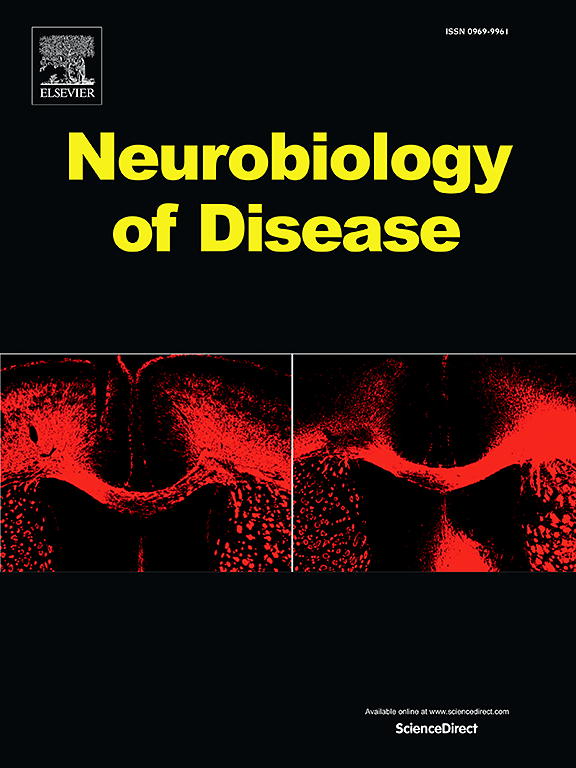3D mapping of direct VTA-CA2 circuit with potential involvement in Parkinson's disease degeneration
IF 5.1
2区 医学
Q1 NEUROSCIENCES
引用次数: 0
Abstract
Parkinson's disease dementia (PDD) is commonly developed in patients at the late stage of Parkinson's disease (PD) with unknown progression mechanisms. From the post-mortem tissues and animal models, the ventral tegmental area (VTA) and the CA2 regions are closely associated with dementia development in PDD. However, the structural connection between the two regions has not been fully traced. In this study, we applied tissue clearing and adeno-associated virus (AAV) tracing to map the neural circuits in a 3D manner. Hence, we have confirmed the direct connection between the regions with two dual AAV tracing systems and traced the VTA-CA2 circuit in 3D reconstruction. With the immunostaining, we have shown that the GABAergic neurons are the potential subtype of the postsynaptic CA2 neurons in the VTA-CA2 circuit. Under the 6-hydroxydopamine (6-OHDA), we have demonstrated the degeneration of the VTA-CA2 circuit from the observation of fragmented axonal projections. Collectively, we have first traced the direct connection of the whole VTA-CA2 circuit in an intact 3D manner and monitored the fragmentation of this target circuit in the 6-OHDA model. This VTA-CA2 circuit can be a target for future studies of the pathological spreading and degeneration mechanism from PD to PDD.
可能与帕金森病变性有关的 VTA-CA2 直接回路三维绘图。
帕金森病痴呆症(PDD)常见于帕金森病(PD)晚期患者,其发展机制不明。从尸体组织和动物模型来看,腹侧被盖区(VTA)和CA2区与帕金森病痴呆的发生密切相关。然而,这两个区域之间的结构联系尚未被完全追溯。在这项研究中,我们采用组织清除和腺相关病毒(AAV)追踪技术,以三维方式绘制了神经回路图。因此,我们通过两个双 AAV 追踪系统确认了两个区域之间的直接联系,并以三维重建的方式追踪了 VTA-CA2 回路。免疫染色表明,GABA能神经元是VTA-CA2回路中突触后CA2神经元的潜在亚型。在6-羟基多巴胺(6-OHDA)作用下,我们通过观察支离破碎的轴突投射证明了VTA-CA2的退化。总之,我们首次以完整的三维方式追踪了整个VTA-CA2回路的直接连接,并在6-OHDA模型中监测了这一目标回路的碎裂。这一VTA-CA2回路可作为未来研究从PD到PDD病理扩散和变性机制的目标。
本文章由计算机程序翻译,如有差异,请以英文原文为准。
求助全文
约1分钟内获得全文
求助全文
来源期刊

Neurobiology of Disease
医学-神经科学
CiteScore
11.20
自引率
3.30%
发文量
270
审稿时长
76 days
期刊介绍:
Neurobiology of Disease is a major international journal at the interface between basic and clinical neuroscience. The journal provides a forum for the publication of top quality research papers on: molecular and cellular definitions of disease mechanisms, the neural systems and underpinning behavioral disorders, the genetics of inherited neurological and psychiatric diseases, nervous system aging, and findings relevant to the development of new therapies.
 求助内容:
求助内容: 应助结果提醒方式:
应助结果提醒方式:


